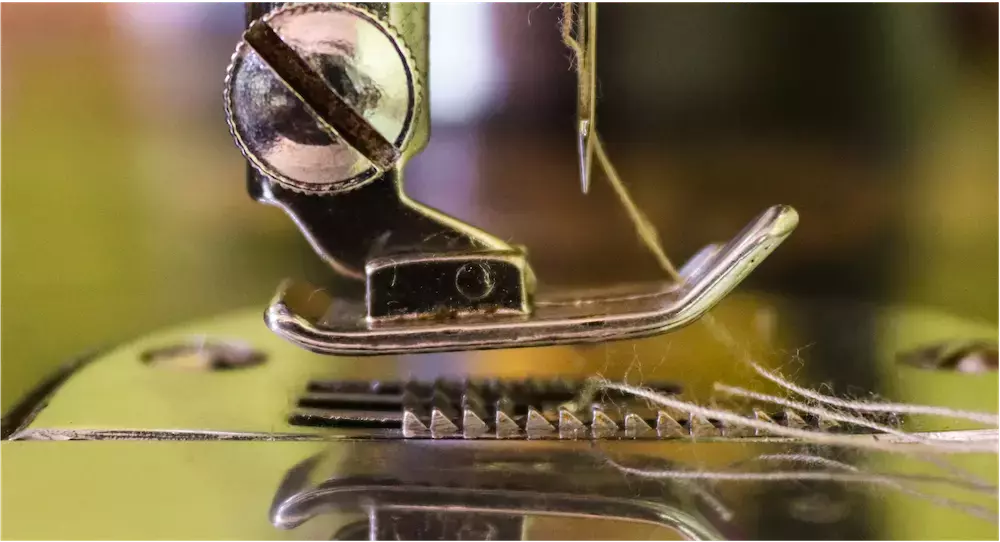Feed Dogs: How Do They Work?
2020-07-13
Have you ever wondered what the small metal ridges under the foot of your sewing machine were for? You're not alone, because these tiny metal teeth that pop up from the plate of most sewing machines are a mystery to many. Some patterns call for them. Others don't mention the feed dogs, which makes this a challenge for beginners and experienced crafters.
What Does it Mean to Raise and Lower the Feed Dogs?
Raising and lowers the feed dogs refers to having the metal ridges up or down. The feed dogs, or those metal ridges, pull the fabric through the machine in steady and even increments. For most projects, it is easier to leave your feed dogs up.
Most machines have a lever to raise and lower the feed dogs. However, some machines will have a plate that you'll need to change to cover those puppies.
When Should You Lower the Feed Dogs?
Whenever you lower your feed dogs, you're eliminating the pull or grip that the machine has on the fabric. Most modern sewers have come to rely on their feed dogs quite a bit, and it may feel very foreign not to have them up. However, there are times when you'll need more control over the material than the machine, which means putting the feed dogs down.
The most common time to lower the feed dogs is when you're working similarly to freehand. Freehand quilting, embroidery or decorative stitches, and other similar situations would be good times to lower the feed dogs. When doing this, you'll have more control over the fabric and needle's position and the stitch length and direction.
Specialized Presser Feet
Even if your sewing machine comes with options to put down the feed dogs, you might be interested in a variety of presser feet. Some of these presser feet allow for easier free-motion, and others have feed dogs that work in unique ways.
A darning foot could be an excellent option for someone who is free-motion quilting. Always make sure that you buy the darning foot that matches the brand of your machine; they all look a little different, so you must match brands.
A walking foot is standard as well because it has feed dogs of its own. These feet are great for machine quilting when creating straight lines and gentle curves.
Building Confidence with Feed Dogs
Feed dogs will generally help more than they hinder, and they're why it's so important not to pull your fabric through the machine. Typically, the feed dogs' set on your machine will feed your material through tiny and consistent steps to help evenly spaced stitches.
If you're unsure of how comfortable you are with this, or know that you have the habit of fabric pulling, Then allow one test strip of fabric to run through your sewing machine without pulling or guiding. You should notice a mostly straight line and even stitches. Then do the exercise again with the feed dogs lowered, or a plate put over the feed dogs depending on your machine. You should see a stark contrast to the results from the first run on the test fabric.
Unless you're free motion quilting or want full control to the degree of freehand work, lower your feed dogs. Keep in mind when you drop them that you may need to pay far more attention to monitoring the evenness of the stitches to prevent gaps or bunching, and it can be a challenge to get a straight line.
At GoldStar Tools, we have many options for your preferences. Whether you want a new foot or just a new feed dog all together, check out our inventory today!





